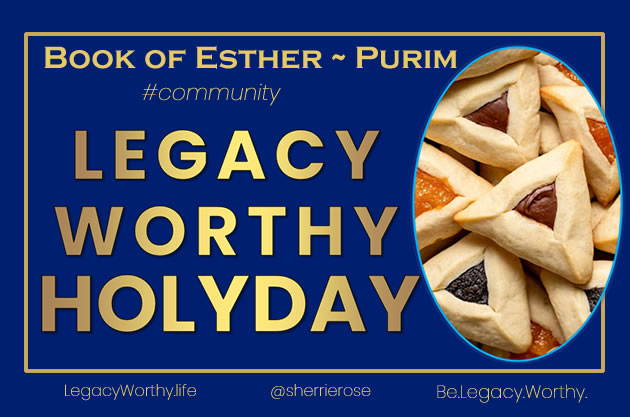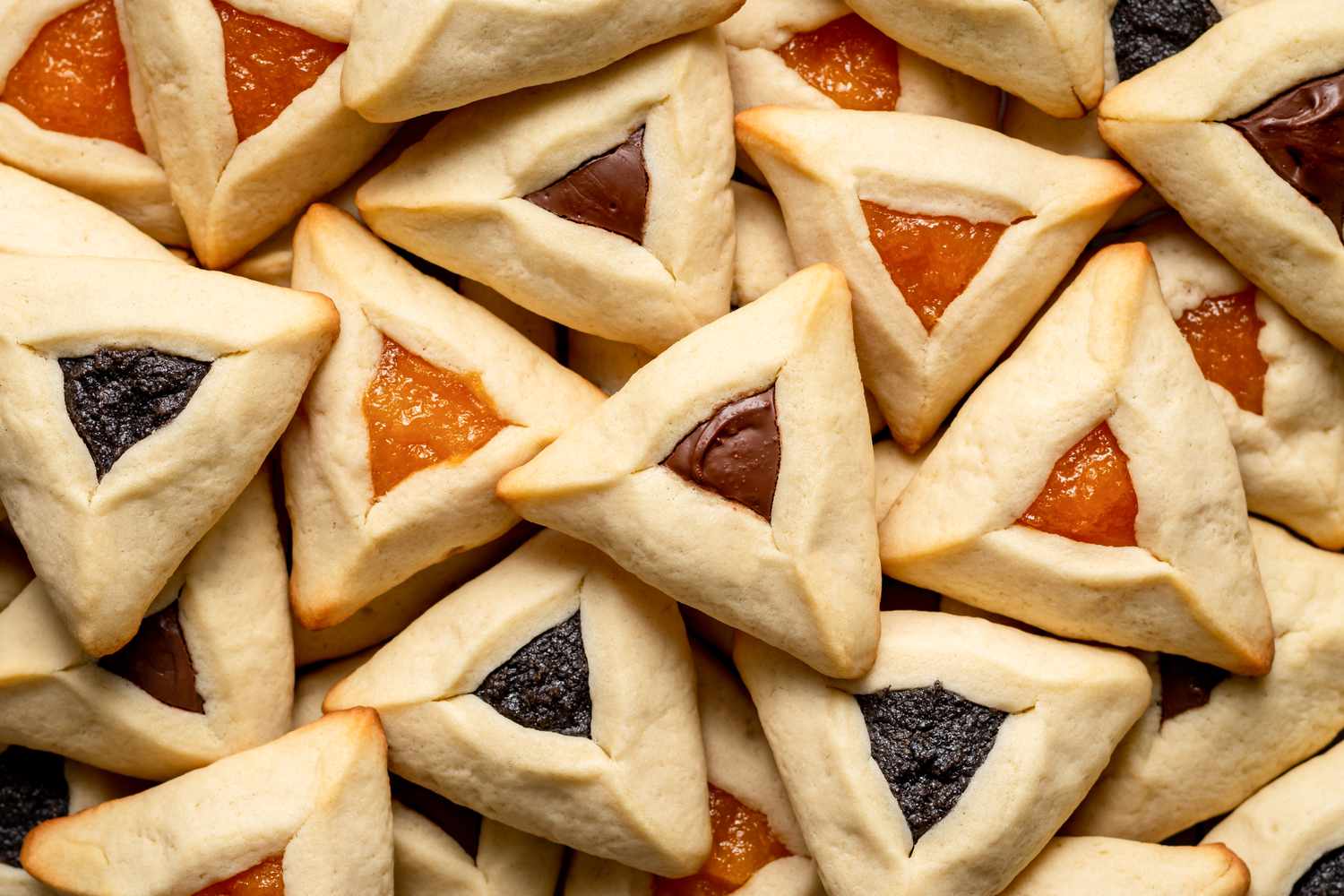Legacy Worthy Holy Day: Purim Holiday & Queen Esther

Legacy Worthy Holy Day: Purim Holiday & Queen Esther
Purim is a holiday that celebrates the triumph of Queen Esther, who saved the Jewish people from destruction. Queen Esther was a brave and powerful leader who risked her life to protect her people. Every year, millions of Jews around the world celebrate Purim as an opportunity to honor this remarkable woman’s legacy. Most scholars place the events recorded in the book of Esther between about 482 B.C. and 478 B.C.
The story of Queen Esther is rich with drama, courage, and faith. It began when Esther’s uncle Mordecai discovered a plot to kill all the Jews in Persia. Desperate for help, he implored his niece to risk her own life by revealing her true identity as a Jew to King Ahasuerus and plead for protection for her people. Despite being terrified, Esther took up the challenge and journeyed to the king’s court.
Through strength and determination, Esther managed to save her people from death. Thus began the celebration of Purim; an occasion for Jews around the world to commemorate Queen Esther’s heroic actions and remember what can be achieved through courage and conviction. In this article, you will learn more about Purim, its traditions, and why it continues to be revered as one of Judaism’s most beloved holidays today.
This year, the Purim Holiday is celebrated on March 7th, 2023 starting the evening before with candle lighting and the start of the festivities.
1. Origin and History of Purim
Purim is an ancient Jewish holiday that has been celebrated for thousands of years. It commemorates the rescue of the Jewish people from a planned massacre in the Persian Empire, as depicted in the biblical Book of Esther. The holiday is traditionally observed through public readings of the Book of Esther, feasts and gift-giving.
The origin story of Purim dates back to the reign of Ahasuerus, king of Persia. According to the Book of Esther, Ahasuerus had banished his wife Queen Vashti after she refused to appear before his court. He then chose Esther, a beautiful Jewish woman, to be his new queen. However, Ahasuerus’ adviser Haman plotted to have all Jews in Persia killed, and he convinced the king to sign off on it. But Queen Esther managed to foil Haman’s plans and secure her people’s safety by appealing directly to Ahasuerus for help.
In commemoration of this event, Jews around the world celebrate Purim every year with festive gatherings and special treats like hamantaschen (triangular pastries) shaped like Haman’s hat. The celebration also honors Queen Esther for her bravery in saving her people from disaster – a reminder that courage and kindness can prevail even when faced with great adversity.
2. Legacy Worthy Holy Day: Purim
The holiday of Purim is a legacy-worthy holy day due to its historical significance and the impact it has had on Jewish culture. Celebrated every year on the 14th of Adar, this joyous occasion commemorates the deliverance of Jews from certain destruction by Queen Esther and her uncle Mordecai. From regal costumes to spirited parades, it is an event that is beloved by many, both young and old.
This holiday harks back to the ancient period of Persian rule when a powerful prime minister called Haman plotted to annihilate the Jews living in Persia. Fortunately, with the help of queen Esther and her uncle Mordecai, a plan was devised that stopped Haman’s evil schemes from coming into fruition. In commemoration of their bravery and success, Purim was created and has been celebrated for centuries since then.
The festivities associated with Purim are filled with fun activities, such as dressing up in royal costumes, reading aloud from the book of Esther during services, giving out sweets and treats to friends and family members, exchanging gifts with others, and more! On top of all that, people even get together for parades where everyone dresses up in colorful costumes while singing traditional songs about Queen Esther. This unique holiday provides an opportunity for members of all ages within the Jewish community to come together in celebration – something that makes it truly special.
3. Role of Queen Esther in Purim
The Jewish festival of Purim is a legacy-worthy holiday and is celebrated by reading the story of Queen Esther. The role that Queen Esther played in this holiday is key to understanding the significance and importance of this religious celebration.
Queen Esther, also known as Hadassah, was chosen by King Ahasuerus to be his queen because she was beautiful and wise. She used her courage and wisdom to save the Jewish people from being destroyed. According to the Book of Esther, Esther’s uncle Mordecai had discovered a plot against the king and told Queen Esther about it. She then risked her own life to tell the king about the plot and saved many lives in the process.
Queen Esther’s bravery showed God’s power over evil, which is why her story is an integral part of Purim. Therefore, when celebrating this day each year, Jews remember Queen Esther’s courage and celebrate their victory over evil through prayer, song, reciting special blessings, eating traditional foods, and giving gifts to one another. This shows that although evil powers may seem strong at times, with faith in God they can be overcome – a lesson we can all learn from on Purim.
4. Celebrations of Purim Holiday
Celebrations of Purim are an important part of the Jewish tradition. Each year, the holiday is celebrated with a variety of traditions and customs that have been passed down through generations. These include reading the Book of Esther, giving to the poor, exchanging gifts, and feasting on traditional Jewish dishes.
One of the most popular activities associated with Purim is dressing up in costumes and masks. This custom is said to have originated as a way to hide one’s identity while reciting certain passages from the Book of Esther during services. People also often dress up their children as characters from the book or in comical costumes for parties and parades.
In addition to costume-wearing and gift-giving, Purim festivities usually involve sharing food with family and friends. Popular dishes served during this holiday include hamantaschen which are triangular pastries filled with fruit or poppyseed filling; kreplach which are dumplings made from dough filled with ground meat; and borscht which is a soup made from beets, potatoes, carrots, cabbage, and other vegetables. These traditional foods are enjoyed by many in celebration of Purim every year.
No matter how it’s celebrated, Purim remains an important part of Jewish culture that has been passed down through generations since biblical times. It continues to bring joy to people around the world as they honor Queen Esther’s legacy through stories and celebrations each year.
5. Symbols and Food of Purim
When it comes to Purim, there are distinct symbols and food associated with the holiday. Traditionally, on Purim, Jews exchange gifts of food and drink as a sign of friendship. The most iconic symbol is the three-cornered hat called a “Purim shpiel” or “Purim spiel.” This hat has been adopted by many cultures throughout history and today is used to playfully celebrate the holiday in costume parties.
A traditional dish for Purim is hamentaschen, or three-cornered cookies filled with jam or poppy seeds. These triangular pastries represent Haman’s three-cornered hat that was worn in ancient Persia. The poppy seed filling can also be seen as a reference to Queen Esther’s courage because it symbolizes her strength to stand up for what she believed in despite the danger she faced from King Ahasuerus.
In addition to hamentaschen, other traditional foods served on Purim include kreplach (dumplings) and cholent (a stew). These dishes are said to bring good luck and health to those who consume them during the holiday. Although these meals may have their own unique variations based on regional customs, they remain staples of the Purim celebration. All of these symbols point towards Queen Esther’s bravery and are celebrated on this special day each year.

6. Rituals Associated with Purim
Purim is a Jewish holiday that celebrates the deliverance of the Jewish people from oppression in ancient Persia. It is celebrated by reading the Book of Esther, exchanging gifts, and enjoying festive meals with traditional treats. Additionally, there are several rituals associated with Purim that involve dressing up in costume, singing, playing games, and more.
One important ritual associated with Purim is called ‘Mishloach Manot’ which involves sending gift baskets of food to friends and family members. This custom symbolizes the joy that was brought to the Jewish people by Queen Esther when she saved them from genocide. Another ritual connected to Purim is called ‘Matanot La’evyonim’ which involves giving charity to those in need. This reminds us of Queen Esther’s generosity towards her people when she risked her own life to save them from harm.
The most well-known tradition associated with Purim is dressing up in costume. This practice honors Queen Esther who courageously disguised herself as an ordinary Jew in order to gain access to King Ahasuerus and plead for mercy for her people. The costumes also serve as a reminder of how God can work through unexpected people and situations to bring about deliverance for his children.
As we celebrate this holiday, it’s important for us to remember all of these traditions and why they are so meaningful—not only for our own spiritual growth but also as a way to honor Queen Esther’s legacy and devotion to her people.
7. Music and Dance Traditions on Purim
Music and dance are an integral part of the Purim celebrations. It’s a time to rejoice and honor Queen Esther, and music is a great way to do this. From the traditional chanting of Megillat Esther (the Book of Esther) to lively performances of Jewish folk songs, there are many different types of music that can be enjoyed on this joyous holiday.
An important tradition is the performance of a Purim shpiel, which is a theatrical parody based on the biblical story. The shpiel often includes humorous songs, dances, and skits that provide entertainment while reminding us about the importance of Purim. Additionally, popular tunes from musicals such as Fiddler on the Roof or folk songs like “Hava Nagila” can be heard during Purim celebrations.
In order to keep everyone entertained throughout the night, it’s customary for participants to put on their own performances. Whether it’s singing traditional Hebrew melodies or dancing to upbeat Israeli tunes, everyone can take part in the fun and show their appreciation for Queen Esther by expressing themselves through music and dance. This adds an extra layer of excitement to any celebration!
8. Purim Costumes Worn For Fun
When it comes to the holiday of Purim, costumes are a must. Whether adults or children, everyone gets in on the fun when it comes time to dress up. People don their most creative and outrageous costumes to celebrate the occasion. It’s not uncommon to see people wearing dresses and wigs inspired by Queen Esther alongside three-piece suits and superhero costumes.
Purim is an opportunity for individuals of all ages to let loose and enjoy a little fantasy. The costumes often become conversation starters, sparking lively debates about who wore what and why. Even better, adults can use this as an excuse to slip into their childhoods again with no judgment from others.
So if you want to show off your wild side this Purim, go ahead! Not only will you be celebrating a legacy-worthy holiday, but you’ll also be able to express yourself in ways that may be difficult during other times of the year. So grab your costume and have a great time!
9. Charitable Acts Performed on Purim
The celebration of Purim is often marked with elaborate costumes and lavish feasts. However, there is more to this holiday than just dressing up and having fun. It is also a time to perform charitable acts in honor of Queen Esther.
There are a variety of ways that people can give back during Purim. One common way to celebrate the holiday is by giving “mishloach manot”, or gift baskets, to friends and family. These baskets contain foods like fruit and cookies that are traditionally eaten on Purim. Additionally, many people will donate money or food to those less fortunate during this time in recognition of Queen Esther’s generosity.
The idea behind these acts of charity is to bring joy and happiness to everyone on this special day. By taking part in these activities, we commemorate Queen Esther’s selflessness and show our appreciation for her legacy. We show that we remember her story and its importance not only through costumes but also through charitable deeds.
10. How To Celebrate Purim In Modern Times
Celebrating Purim in modern times is a great way to honor its legacy and remember the faithfulness of Queen Esther. It can be done with traditional practices or in more modern ways that are still meaningful.
One traditional practice is to give out “mishloach manot” baskets filled with food items that represent different parts of the Purim story. This could be done today by creating gift baskets for family, friends, or those in need. Additionally, it is customary to hold a celebratory meal on the day of Purim, which could be a virtual gathering or an outdoor picnic if possible.
The Book of Esther is also read aloud during Purim, which is a great opportunity to bring people together in celebration and appreciation for the story and its message. People can share their interpretations and favorite parts of the story as part of this tradition. These conversations can help create meaningful connections between people and further deepen our understanding of the holiday’s purpose.
Purim is an important holiday that honors Queen Esther’s faithfulness and bravery. By engaging in traditional practices or finding more modern ways to celebrate, we can keep its legacy alive while recognizing its relevance today.
11. Importance of Worthy Deeds During Purim
Purim is a Jewish holiday that celebrates the courage of Queen Esther and her role in saving the Jewish people from annihilation. During Purim, it is customary to perform acts of tzedakah, or charity, in remembrance of the heroic deeds of Queen Esther. It’s important to remember that we can still honor this legacy by doing good deeds during Purim.
Tzedakah doesn’t just refer to monetary donations; it also includes acts like volunteering at a soup kitchen, donating clothing and other items to those in need, or simply taking time out of your day to help someone else. These activities not only show gratitude for what Queen Esther has done for us, but they also create positive change in our own communities.
Every year on Purim, we get an opportunity to make a difference and honor Queen Esther’s legacy through our actions. Instead of just gifting sweets and food baskets, why not take some time out of your day to make a meaningful contribution? It doesn’t have to be something big — small acts of kindness are powerful too! Even something as simple as smiling at someone you meet can have an impact that lasts longer than one day.
On Purim, let’s come together and show our appreciation for Queen Esther by performing worthy deeds that benefit others around us. Let’s use this holiday as an opportunity to make a difference in the world!
12. Linking Queen Esther To Other Jewish Holidays
The story of Queen Esther is an important part of the Jewish holiday Purim. It is the tale of a young queen and her brave acts, which saved her people from destruction. However, there are several other holidays throughout the year that also link to Queen Esther in some way.
One such holiday is Shavuot. This holiday celebrates God’s giving of the Torah, a gift to Moses on Mount Sinai. The story of Queen Esther ties into this in that she was able to use her courage and wisdom to save the Jewish people from harm when they were threatened with annihilation by Haman’s decree. This period of danger is remembered during Shavuot as a reminder that even in times of great difficulty, God can provide us with strength and courage to help us prevail over evil.
Additionally, Passover holds special significance for Queen Esther and her deeds as well. Passover commemorates the Jews’ exodus from Egypt and celebrates their liberation from slavery. During this time, Jews remember how Queen Esther risked her life to protect all those around her from certain death at Haman’s hands. Her bravery serves as an example of how individuals can work together for a common goal in order to make positive change in their community and their world.
Queen Esther’s legacy has had lasting effects on Judaism for generations, providing hope and inspiration through her heroic actions which have been commemorated each year on multiple holidays honoring freedom and liberation.
13. Passover and Purim: Connections and Differences
When discussing Jewish holidays, two of the most significant are Passover and Purim. Both of these holidays have connections to Queen Esther, but they also have distinct differences that should be explored.
Passover celebrates the exodus of the Jews from Egypt, and is typically celebrated in the spring. There is a specific meal eaten during Passover called the Seder that includes readings from the Torah and special foods, such as matzah. The story of Queen Esther plays an important role in this holiday, as she was responsible for saving her people from destruction.
Purim is celebrated in the winter, and it commemorates Queen Esther’s victory over Haman and his plan to massacre the Jews. This celebration involves dressing up in costumes, giving gifts to friends and family, and reading aloud from the Book of Esther. It is also customary to eat traditional pastries called hamentaschen which symbolize Haman’s three-cornered hat.
Both Passover and Purim celebrate Queen Esther’s legacy as someone who showed courage when faced with persecution. Through these holidays, we can honor her memory while furthering our understanding of Jewish history and culture.
14. Purim’s Place In Jewish History
Purim is a Jewish holiday that celebrates the deliverance of the Jews from destruction in ancient Persia. It is usually celebrated with joyful activities, including dressing up in costumes, eating sweets, and exchanging gifts. But Purim has a special place in Jewish history.
This holiday commemorates Queen Esther’s courageous actions to save her people from destruction. As the story goes, King Ahasuerus had issued an edict to destroy all Jews living within his kingdom. Queen Esther was able to intervene and persuade him to revoke the decree – ultimately saving her people from destruction. This event is known as the “Miracle of Purim” and it has become an important part of Jewish culture and tradition.
The celebration of Purim is a reminder of what can be achieved when we have faith, courage, and determination – qualities embodied by Queen Esther throughout her life. Her example shows us that even when faced with impossible odds, it’s possible to make a difference in the world. On this joyous holiday, we celebrate this lesson and remember its importance for generations to come.
15. Purim Significance as A Holy Day
Purim is an important holiday in the Jewish faith, commemorating the salvation of the Jewish people from a royal decree issued by King Ahasuerus. It is celebrated on the 14th day of Adar in the Jewish calendar and is a time of joyous celebration. Not only does it have historical significance, but it also serves to remind us of certain spiritual lessons, such as the power of prayer and divine intervention.
Queen Esther played a crucial role in this story, as she risked her life to save her people from destruction. She’s remembered as a brave heroine who was willing to put herself in harm’s way for the sake of others. Her courage and loyalty remain an inspiration to all who celebrate Purim today.
The festival highlights how God works in mysterious ways and allows us to see that no matter how dire or hopeless a situation may seem, there is always hope for deliverance through Him. Purim celebrates this special moment in history when God intervened and saved His people from destruction – reminding us that He is always with us even if we cannot see Him or sense His presence at times.
16. L’chaim to you this Purim Holiday
Purim is a legacy worthy holiday that celebrates the courage and strength of Queen Esther. She was able to save the Jewish people from Haman’s evil plan with her bravery and cunning. Purim is celebrated annually, filled with symbols and traditional foods that remind us of Queen Esther’s story. It also serves as an important link between other Jewish holidays such as Passover, showing us how one event can have a lasting impact on our lives and future generations. As we reflect on Purim, let us remember Queen Esther’s example of courage and faith during difficult times. Let us also use this special holy day to reconnect to our community and create meaningful memories that will last for generations to come.




